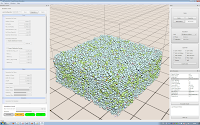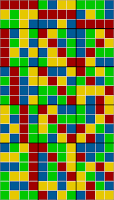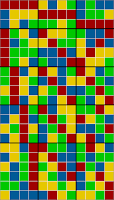"Cuda Toolkit 4.1 and Qt4 on Linux"It is time for another tutorial. Today we want to setup Qt+Cuda on Linux/Kubuntu. It is recommend to install Qt from the repositories. In the 3rd section I also wrote down the instructions for compiling Qt from scratch. If you find some oddities, just leave a comment (this isn't the best HowTo, I am still learning).
Content:1. GPU Drivers + CUDA Toolkit 4.1 + CUDA SDK2. QtCreator and Qt4 Example Project with CUDA3. Compile Qt4 from scratch (optional)4. Tools - Debugging and Profiling--
My System:- Kubuntu 11.10 (Oneiric Ocelot) at 32bit.
- g++ v4.5, gcc v4.5 (4.6 and up is not supported by cuda toolkit 4.1,
see here)
- Qt 4.7.4 (dev-tools, qtcreator)
Downloads:-
Cuda Toolkit 4.1 + SDK (got Ubuntu 11.04 & 32bit)
-
qt4_mandelbrot (Qt4 example project with Cuda kernel)
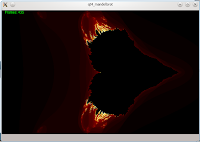
--
1. Get the NVidia / CUDA stuff installed:I've got here:
cudatoolkit_4.1.28_linux_32_ubuntu11.04.run gpucomputingsdk_4.1.28_linux.run1.1 DriversFirst of all we update our nvidia drivers. After I got some troubles with the downloaded drivers (blue colored videos^^) the following did it for me.
sudo add-apt-repository ppa:ubuntu-x-swat/x-updatessudo apt-get updatesudo apt-get install nvidia-currentI've uninstalled all the nvidia drivers before, but maybe you don't have to. I did a backup of my /etc/X11/xorg.conf and stopped the x-server (ctrl+alt+F1 and sudo stop kdm, then purging my old nvidia stuff, then run the commands from above and finally sudo start kdm to get back, I hope you wont need to do that).
Now I have NVidia driver version 295.40.
(Refs:
wiki.ubuntuusers.de,
hecticgeek)
1.2 ToolkitJust run:
sudo ./cudatoolkit_4.1.28_linux_32_ubuntu11.04.runEdit your .bashrc:
export PATH=/usr/local/cuda/bin:$PATH
export LD_LIBRARY_PATH=/usr/local/cuda/lib:$LD_LIBRARY_PATH1.3 NVIDIA GPU COMPUTING SDKTo install the gpu computing sdk, just run as user:
./gpucomputingsdk_4.1.28_linux.runThe examples are not build yet, you actually have to run make in ~/NVIDIA_GPU_Computing_SDK, but in most cases errors will occur.
Error Messages:"unsupported GNU version! gcc 4.6 and up are not supported!",
Install gcc-4.5 and g++-4.5 as a second compiler and softlink to it in /usr/local/cuda/bin
sudo ln -s /usr/bin/gcc-4.5 /usr/local/cuda/bin/gccrendercheck_gl.cpp:(.text+0x119b): undefined reference to 'gluErrorString'cannot find -lcudaLib paths are messed up in common.mk and common_cudalib.mk (
see here). Path to nvidia_current is missing. I have uploaded a patched version.
Download PatchMaybe you have to edit the path to your nvidia driver where libcuda and others are located. Edit in that downloaded patch the files common.mk and common_cudalib.mk at the beginning:
# ### patch for finding libcudaNVIDIA_CURRENT = /usr/lib/nvidia-current/There are still some errors in the freeImageInteropNPP in CUDALibraries, but I dont care for the moment. The examples can be compiled in NVIDIA_GPU_Computing_SDK/C/ directly. I run deviceQuery to check if installation was successfull.
~/NVIDIA_GPU_Computing_SDK/C/bin/linux/release$ ./deviceQueryIf this is working for you, then everything with cuda is fine. If you got
"./deviceQuery: error while loading shared libraries: libcudart.so.4: cannot open shared object file: No such file or directory", then you forgot to add the cuda libs to LD_LIBRARY_PATH.
--
2. Qt4 Projects with CUDA on LinuxStart your QtCreator and create a new project (or download
qt4_mandelbrot as example). My structure is:
qt4_mandelbrot - source code
qt4_mandelbrot/obj - object code including cuda object code
qt4_mandelbrot/bin - binaries
// I've disabled the shadow build option in the qt4 project settings, because I configured the directories in the .pro file on my own.
For the .pro file cuda settings I refer to
this site. You also can have a look at the qt4_mandelbrot project.
In QtCreator you need to set the build environment. Go to Projects and add to the Build Environment a new variable "LD_LIBRARY_PATH" with "/usr/local/cuda/lib". Check if the execution environment has this setting as well.
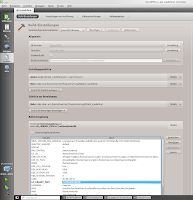
Press Ctrl+B or Ctrl+R to build/run the project.
--
3. Qt4 - compile it from scratch (optional)Downloads:-
Qt Environment (Download Page)
- -
Qt Sourcecode (tar.gz) (v4.8.1)
- -
Qt Creator (32bit Binary, v2.4.1)
untar source code:
tar -xf qt-everywhere-opensource-src-4.8.1.tar.gzconfigure Qt for compilation ("-release", "-shared" are actually default)
./configure -release -shared -no-qt3support -no-webkit -optimized-qmake -no-multimedia -no-phonon -nomake examples -nomake demos
compile and install (takes a while, runs with two jobs at once cuz I have two CPUs):
sudo make install -j2install qt creator
chmod +x qt-creator-linux-x86-opensource-2.4.1.bin
./qt-creator-linux-x86-opensource-2.4.1.binstart qt creator and set path to qmake (Qt Creator - Tools - Options: Qt Versions):
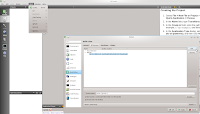
Now you can try a qt application created by the project wizard of Qt Creator. Press Ctrl+R to compile and run.
To get access to Qt on shell/console, you have to extend the PATH variable. Edit .profile and .bashrc (home directory) and add:
export PATH=/usr/local/Trolltech/Qt-4.8.1/bin/:$PATHUninstall:
Qt: cd /pathto/qt_source and
sudo make uninstall QtCreator: cd /pathto/qtcreator/ and run
./uninstall--
4. Tools - Debugging and ProfilingFor debugging you can try
DDD (sudo apt-get install ddd):
ddd --debugger cuda-gdb ./applicationIf you just have a single GPU you can't debug local kernels yet. Since NSight 2.2 enables Single-GPU debugging again (NSight is only for Windows/VisualStudio), I hope the upcoming Toolkit 4.2 will do this for Linux as well.
For informations on memory leaks and access errors just use cuda-memcheck (see manual ;) ).
Profiling:
To profile the gpu site you can use the nvidia profiler (nvvp). Just run nvvp and open your binary into a new session.
You can profile (the host site) with gprof or oprofile. gprof needs the compiler flag -pg that is also available in nvcc. Just have a look at the .pro file coming with this tutorials example project. To get a profile you have to run the binary, which creates a gmon.out for the gprof profiler. Now you can generate a readable output:
gprof ./qt4_mandelbrot > output.txtoprofile (sudo apt-get install oprofile oprofile-gui).
"OProfile is a system-wide profiler for Linux systems, capable of profiling all running code at low overhead. [...] OProfile leverages the hardware performance counters of the CPU [...]" (
oprofile website)
So oprofile offers CPU and hardware based profiling which gprof doesn't. For usage I just refer to
this site. If you want to read more about the sampling methods and the advantages of oprofile, so read
this site.
References:
http://stackoverflow.com/...cuda-incompatible-with-my-gcc-versionhttp://developer.nvidia.com/cuda-toolkit-41http://wiki.ubuntuusers.de/Grafikkarten/Nvidiahttp://www.hecticgeek.com/...drivers-in-ubuntu-11-10-oneiric-ocelot/http://forums.developer.nvidia.com/...compiling-sdk-on-ubuntu-11-10/p1http://qt.nokia.com/downloadshttp://cudaspace.wordpress.com/...qt-creator-cuda-linuxhttp://www.gnu.org/s/ddd/http://oprofile.sourceforge.net/about/http://doc.opensuse.org/...tuning.oprofile.htmlhttp://lbrandy.com/...oprofile-profiling-in-linux-for-fun-and-profit/




